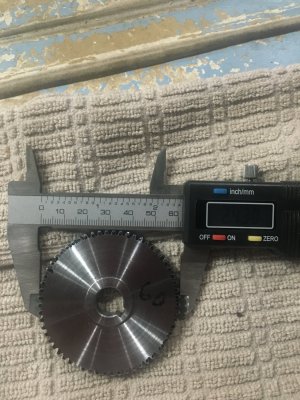Does it look like this?
View attachment 501091
http://www.yishoumachinery.com/en/pd.jsp?recommendFromPid=0&id=19&fromMid=311
That's a pretty standard 7x14 mini lathe made by RealBull.
I had one much like it, and after some 'tune-ups' it worked fine.
Plastic change gears work fine on those lathes, and can be made easily on a 3D printer. The files are online; gears are very easy to make suing CAD like OnShape (there's a plug-in), if that interests you.
Check the bore on the change gears - it may be different than the bore on the change gears for the more common Sieg 7x lathes sold by Grizzly, Harbor Freight, LittleMachineshop (LMS) etc. You can get Sieg gears from LMS, and 'everywhere' online.
Change gear calculator is at the LMS website, BUT to use the calculator you need to know whether your lathe has a metric (1.5mm) or 16TPI Imperial leadscrew.
https://littlemachineshop.com/reference/change_gears.php
My Vevor had a metric leadscrew. Since your lathe chart is calling for the 40/55 gear combo to get to 20 TPI, it has a metric leadscrew. It probably doesn't have a threading dial?
LMS also has operating manuals.
If you aren't allergic to Facebook, there are a couple of good 7x lathe groups there. More knowledgeable (about Chinese 7x lathes) crowd over there, too.


